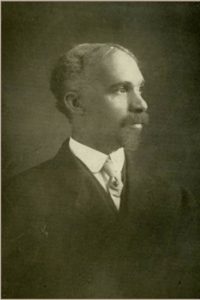
Cortland Van Rensselaer Creed, 1857
*This date in 1833 is celebrated as the birth date of Cortlandt Van Rensselaer Creed, a Black Doctor.
His attendance at Yale followed the Connecticut Assembly's decision in 1846 to remove references to race from the state constitution. In 1854, he officially became the first Black person to register and study at Yale.
Twenty years earlier, a Connecticut law prohibiting out-of-state blacks from attending any Connecticut school without permission from the town kept James W.C. Pennington of New York from officially enrolling in Yale's Divinity School. He was allowed to participate in classes but left without a degree. He received international praise as a scholar and accepted an honorary doctorate from the University of Heidelberg.
As a lifelong New Haven resident, Creed was not subject to the law that prevented Pennington from enrolling at Yale. He was John Creed's son, a Yale steward, and Vashti Duplex Creed, the first black teacher in New Haven. His parents had named him for Cortlandt Van Rensselaer, friend and classmate of Yale President Dwight Woolsey, Dean Charles Hooker, and the Reverend Leonard Bacon, a member of the Yale Corporation.
After completing three years of study, researching, and writing a thesis, Creed took oral examinations before the Connecticut Medical Society representatives, the medical school faculty, and President Woolsey. On Jan. 15-16, 1857, he received the M.D. with ten other young men. His thesis, "On the Blood," dealt with the chemistry and physiology of blood in health and sickness. After graduation, Creed opened an office on Chapel Street in New Haven and developed a successful practice.
According to Creed historian Curtis Patton, professor in the Departments of Microbiology and Epidemiology and Public Health, at the outbreak of the American Civil War, Creed wrote to the governor of Connecticut requesting a commission to serve as a surgeon in the state militia. But he was refused because of his race. As the war progressed, the need for blacks to further the Union cause became clear, and the governor issued a call to arms to black men in 1863. Creed wrote to the governor again, this time to thank him, declaring, "On every side, we behold colored sons rallying to the sound of Liberty and Union."
He enlisted in 1864 and was appointed acting surgeon of the 30th Connecticut Volunteers, a company of blacks. After the war, Creed returned to his New Haven practice. Over the years, he was featured in New York Times articles, including one on the shooting of President James Garfield. Doctors did not want to operate on the wounded president until they could locate the bullet. Creed was on the list of several prominent physicians that the White House contacted for suggestions on how to find the bullet. Garfield died of blood poisoning in 1881 before the bullet could be found.
Another New York Times article highlighted Creed's forensic expertise in helping to solve the murder of a young New Haven woman who had been poisoned with arsenic. Two local boys were eventually arrested for the crime. "Arsenic Under the Elms: Murder in Victorian New Haven," a recent novel by Virginia McConnell, is based on those events. After a challenging life and career, Creed died in New Haven on August 8, 1900, at age 65.